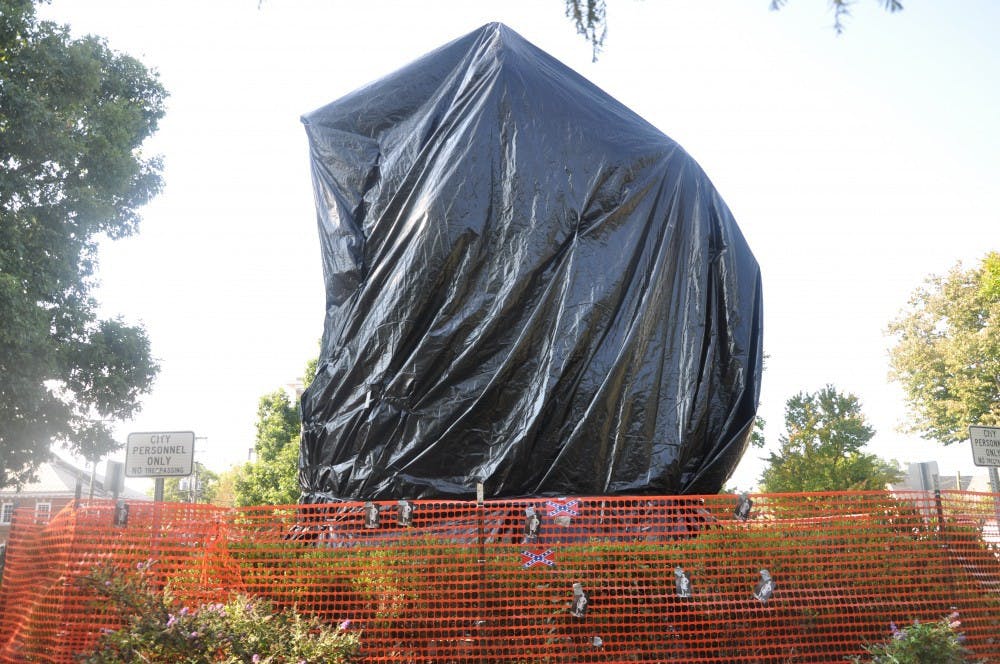Charlottesville Circuit Court Judge Richard E. Moore oversaw the latest hearing in a lawsuit filed against the City and members of City Council to stop the removal of the statue of Confederate General Robert E. Lee from Emancipation Park in downtown Charlottesville Monday. Moore declined to make a decision regarding coverings placed by the City of Charlottesville on the statues of Lee and Thomas “Stonewall” Jackson. The coverings will remain until Moores finishes his deliberations, which he expects to go until Feb. 27.
City Council voted 3-2 to remove the statue last February. The lawsuit was filed in March 2017.
Several months later, and a week after the deadly Aug. 12 United The Right rally, City Council voted to cover the two Confederate monuments with tarps.
The plaintiffs are 11 individuals and two organizations — the Monument Fund, Inc. and the Virginia Division of the Sons of Confederate Veterans, Inc. The city requested to drop the lawsuit, but Moore ruled the case would move forward in October. In November, City Council approved a resolution to begin the process of redesigning the parks and removing the statues.
In October, former City Attorney S. Craig Brown and Deputy City Attorney Lisa Robertson argued the tarp was a temporary measure for mourning, and Moore allowed the tarps to remain.
The biggest question in Monday’s hearing was that of permanence and whether City Council’s decision in August and resolution in November constituted an indefinite move to hide the statues, or an extended exercise in mourning.
“If [a statue] is totally covered, I think that’s tantamount to removing it,” Moore said.
During the hearing, the plaintiffs called Stephen Mathis, the funeral director for Hill and Wood Funeral Service, to testify on the lengths of mourning periods for various religions. He claimed most families do not formally mourn longer than one month.
Robertson, representing the City and City Councilors in the case, said Mathis’ claims were irrelevant, stating Charlottesville is a community. Thus, the mourning after a tragedy is different. Moore agreed.
“He’s clearly an expert in the practice of funerals,” Moore said. “But just because he’s an expert in that field doesn’t mean every answer to every question is admissible.”
The plaintiffs also called Charlottesville City Manager Maurice Jones as a witness. Jones, who executes legislative actions passed by City Council, has managed the shrouds on the statues since his staff was ordered to place them in August. He noted that, in the weekend before the hearing, the tarps had been pulled down on three occasions.
Jones also testified about his interactions with the Board of Architectural Review. The plaintiffs claimed the BAR would take issue with the city’s unilateral decision to cover the statues, but Jones said that — while he hadn’t received explicit approval from BAR — he hasn’t been approached by any BAR representatives about the tarps.
The next hearing in the case is scheduled for Feb. 27 at 10 a.m.







